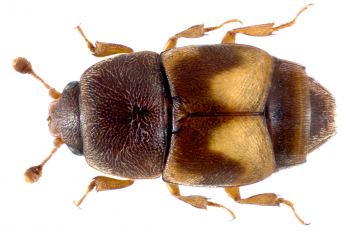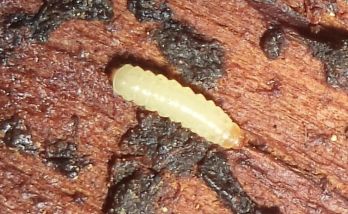Dried fruit beetle
Dried fruit beetles, also known as Carpophilus beetles, are a worldwide pest for a variety of hosts.
Adult beetles can damage pre-harvest and post-harvest fruits, and grains. They are also a major vector of the fungal disease brown rot.
Background
Dried fruit beetles are introduced pests in Australia, and they have no known natural enemies to limit their abundance.
Dried fruit beetles are strong fliers and can travel several kilometres in search of hosts. Summer rainfall and rotting fruit provides the best conditions for breeding. Dry summer and autumn conditions reduce the threat in the following season.
Good hygiene is the most important aspect in managing this pest. Fallen fruit should be removed or destroyed regularly during summer to break the lifecycle.
Impacts
Most commercial loss from dried fruit beetles occurs from feeding on ripening stone fruit and persimmons.
They can burrow into fruit still on the tree, entering near the stem end suture line, or through splits and mechanical damage. In other fruits such as citrus, apples and figs, only fallen fruit is attacked.
Vector
Dried fruit beetles spread brown rot as they crawl through damaged fruit.
The disease spores stick to their bodies and are carried through the tree canopy and between orchards. Fruit becomes infected by contact with dried fruit beetles, without them feeding on the fruit.
Controlling these beetles where they are present, is important in managing brown rot.
Identification
Adult dried fruit beetles are oblong shaped, about 3mm long. They have clubbed antennae with short wing covers that do not cover the end of the abdomen.
The beetles can be black, brown, or mottled yellow. Larvae are yellowish with a brown head and forked tail, about 5mm long when fully grown.
Lifecycle
Dried fruit beetles do not breed in fruit on the tree – adults lay eggs in rotting or damaged fruit on the orchard floor. Mature larvae emerge from the fruit and pupate in the ground.
Adults emerge from the pupae and attack fruit in late spring and summer. If no hosts are available, they overwinter in cracks in the tree, under bark or in mummified fruit.
It takes about a month in summer to develop from egg to adults, so there are many generations per year.





